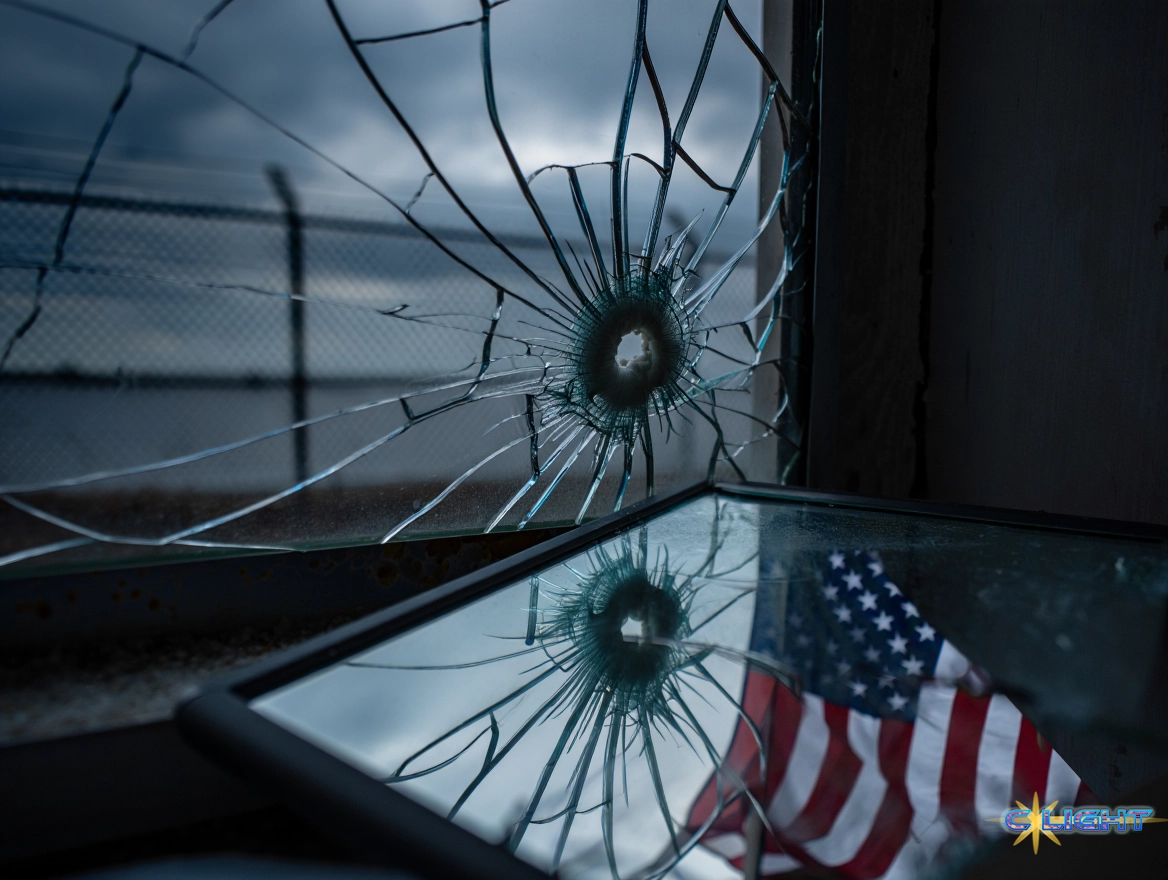4 minutes read time.
In a nation increasingly defined by the grim logic of political violence, the deadly shooting at a Dallas immigration field office on Wednesday stands out as a particularly tragic and confounding episode. An attacker, firing from a nearby rooftop with ammunition literally inscribed with an “ANTI-ICE” message, killed one person and critically wounded two others. In the immediate aftermath, the Trump administration and its allies seized upon the event, swiftly crafting a narrative of a targeted assassination of law enforcement driven by the “Radical Left’s” demonization of federal agents. There is just one profound, inconvenient fact that shatters this simple, politically useful story: all of the victims were immigrant detainees.
This central paradox—an anti-ICE shooter murdering the very people held captive by ICE—exposes the dangerously incoherent nature of the political hatreds currently consuming the nation. The message of the attack is not a clear ideological statement, but a terrifying scream of pure, nihilistic violence.
The Instant Narrative: A Convenient Attack on Law Enforcement
Before the full details were even confirmed, the administration and its political allies rushed to frame the shooting as a clear-cut case of left-wing extremism targeting federal officers. President Felonious Punk posted on Truth Social that the attack was the “result of the Radical Left Democrats constantly demonizing Law Enforcement”. Vice President JD Fuxacouch declared that the “obsessive attack on law enforcement, particularly ICE, must stop,” asserting without evidence that recent political violence “is not a both sides problem”.
This narrative was bolstered by FBI Director Kash Patel, who quickly released a photo of a bullet casing etched with the words “ANTI-ICE,” calling the shooting a “despicable, politically motivated” attack. This single piece of evidence became the cornerstone of a broad political messaging campaign, with figures from Texas Governor Greg Abbott to Congresswoman Marjorie Taylor Greene blaming Democrats, “antifa,” and “the radical left” for fostering a climate of violence against federal agents. The story was simple, powerful, and fit perfectly into a pre-existing political framework.
The Inconvenient Victims
The administration’s narrative, however, willfully ignored the most crucial detail of the tragedy: the victims were not the armed agents of the state, but the vulnerable people in their custody. This fact was so inconvenient to the preferred storyline that some Democratic officials accused investigators of deliberately downplaying it. Representative Marc Veasey (D-Texas) said he was “absolutely sickened” by officials’ comments that emphasized the attack on law enforcement while obscuring the reality that only detainees were shot. “If they are trying to control this narrative and they don’t want migrants to be the victim in this story,” Veasey argued, “then they may want to slow-walk giving us any information about this so they can still keep on talking about attacks on ICE”.
Veasey’s critique cuts to the core of the paradox. Why would an attacker ostensibly motivated by hatred for ICE choose to murder the very migrants the agency detains? The administration’s narrative provides no answer because it cannot comprehend a reality outside its simple binary of pro-cop versus anti-cop.

The Ideological “Salad Bar”
The most plausible, and perhaps most disturbing, explanation for the shooter’s contradictory actions lies in what counterterrorism experts now call the “salad bar” of modern extremism. In an increasingly fragmented and online-driven world, attackers are no longer adhering to coherent, traditional ideologies. Instead, they pick and choose tenets from a hodgepodge of sources—left and right, anarchist and authoritarian—to create a personalized, often contradictory doctrine of rage.
It is entirely possible the shooter, Joshua Jahn, absorbed both anti-ICE rhetoric about the agency’s cruelty and the pervasive, dehumanizing anti-immigrant rhetoric that casts migrants as an invading threat. In such a poisoned and confused mindset, the symbols of the conflict—the ICE building, the agents, and the detainees themselves—can blur into one indistinguishable mass. The “message” of the shooting, then, is not a coherent political statement but a violent manifestation of this ideological confusion, where the supposed crime (ICE’s existence) and the supposed criminals (the immigrants) become interchangeable targets.
This tragic event is a symptom of a political discourse that has collapsed into pure animosity. The administration’s rush to weaponize the tragedy for partisan gain, while ignoring the inconvenient identity of the victims, is just as telling as the shooter’s confused motives. It reveals a political class more interested in scoring points from a crisis than in understanding the complex and dangerous furies that created it.
Discover more from Clight Morning Analysis
Subscribe to get the latest posts sent to your email.










